...
NAME: Instrument Casket
ALIAS: Sterilization Container, Casket
CATEGORY: Accessory
USE: Holds and keeps the instrument basket in place, which holds surgical instruments sterile. Protects instruments from damage.
...
NAME: Instrument Basket
CATEGORY: Accessory
USE: Holds surgical instruments that are/are going to be sterilized. Handles on each side of the basket are used to pull basket out of instrument casket.

NAME: Instrument Stringer
CATEGORY: Accessory
USE: Used to organize ring-handled instruments within a tray.
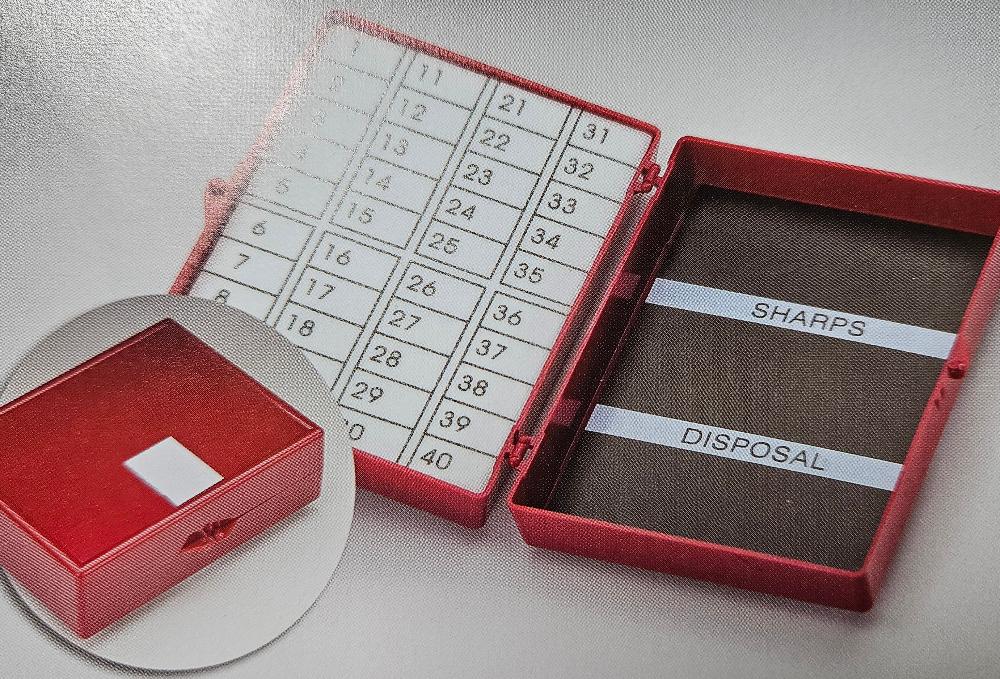
NAME: Sharps Book Needle Counter
ALIAS: Needle Mat, Sharps Holder, Needle Magnet
CATEGORY: Accessory
USE: Contains sharps and needles, and is put on the back table.
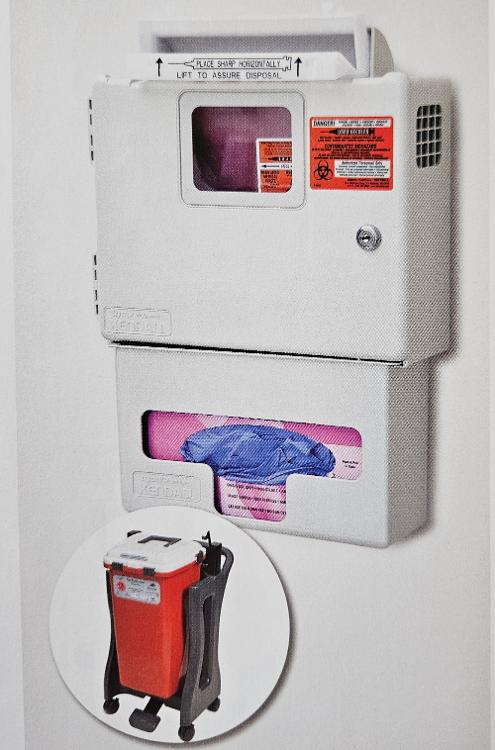
NAME: Sharps Canister
CATEGORY: Accessory
USE: Used to dispose of sharp instruments and supplies.

NAME: #4 Knife/Scalpel Handle
CATEGORY: Cutting/Dissecting
USE: Used with the #20-#25 blade to create a larger and deeper incision in heavy tissue areas.
...
NAME: #4 Long Knife/Scalpel Handle
CATEGORY: Cutting/Dissecting
USE: Used with the #20 - #25 blades to create larger and deeper incisions in heavy tissue areas.
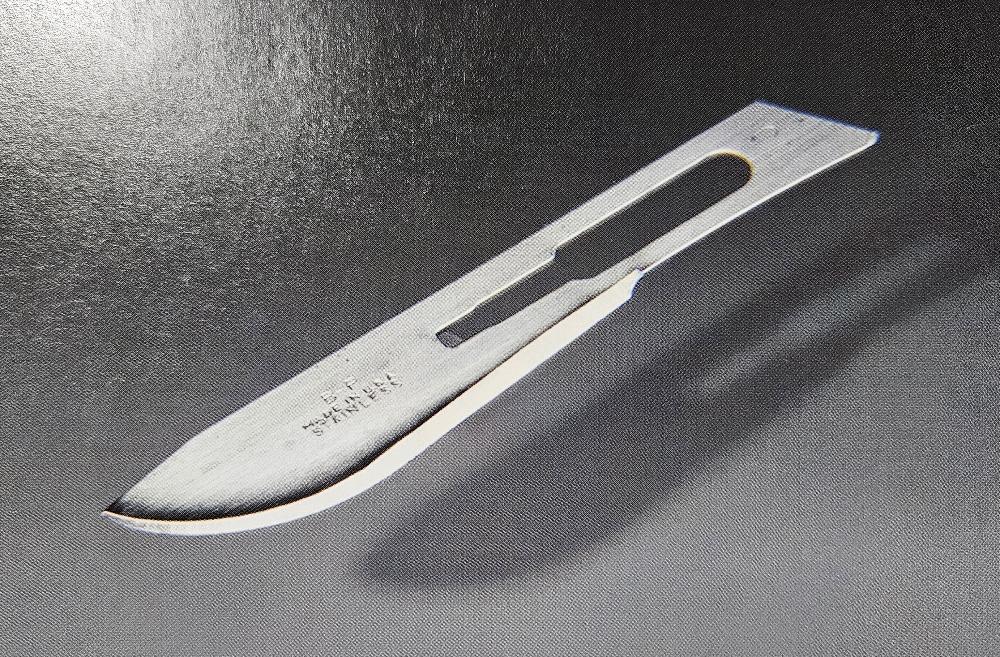
NAME: #20, #21, #22, #23, #24, #25 Blades
CATEGORY: Cutting/Dissecting
USE: Is used with the #4 scalpel handle to create a larger and/or deeper incision on heavy tissue and bone.
...
NAME: #3 Knife/Scalpel Handle
CATEGORY: Cutting/Dissecting
USE: Used to hold #10, #11, #12, and #15 blades. Used to make skin incisions or precise incisions.
...
NAME: #3 Long Knife/Scalpel Handle
CATEGORY: Cutting/Dissecting
USE: Is used for precision cutting deep within a wound.

NAME: #3 Long Angled Knife/Scalpel Handle
ALIAS: Cold Cone Knife
CATEGORY: Cutting/Dissecting
USE: Used to remove abnormal cervical tissues during a cold conization of the cervix.

NAME: #7 Knife/Scalpel Handle
CATEGORY: Cutting/Dissecting
USE: Used when precision cutting is needed in a confined space or a deep wound.
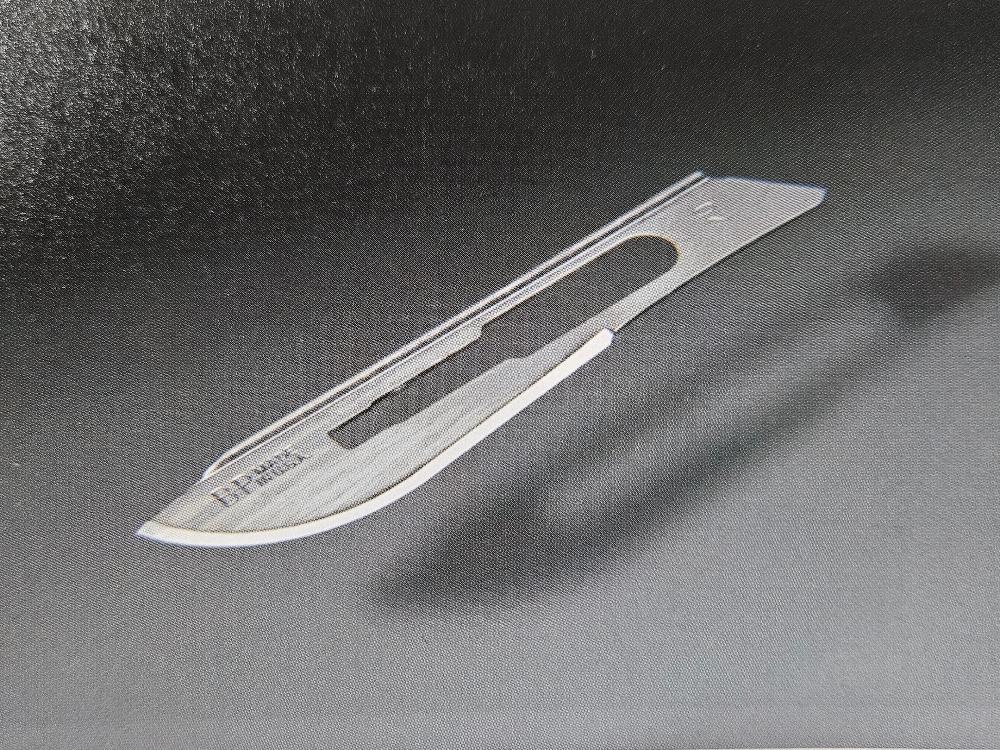
NAME: #10 Blade
CATEGORY: Cutting/Dissecting
USE: Used for making skin incisions.
...
NAME: #11 Blade
CATEGORY: Cutting/Dissecting
USE: Used for puncturing the skin or to initiate the opening of an artery.
...
NAME: #12 Blade
CATEGORY: Cutting/Dissecting
USE: Used mainly during tonsillectomies.
...
NAME: #15 Blade
CATEGORY: Cutting/Dissecting
USE: Used for pediatric or plastic/recovery surgery.
...
NAME: Round Beaver Knife Handle
CATEGORY: Cutting/Dissecting
USE: Used to hold smaller blades for precise incisions of microsurgical procedures.
...
NAME: Round Beaver Blades
CATEGORY: Cutting/Dissecting
USE: Used to make precise incisions during microsurgical procedures.
...
NAME: Flat Beaver Knife Handle
CATEGORY: Cutting/Dissecting
USE: Used to hold a small blade for microsurgical procedures where precise incisions are required.
...
NAME: Flat Beaver Blades
CATEGORY: Cutting/Dissecting
USE: Used to make precise incisions.
...
NAME: Dermatome
ALIAS: Paget Dermatome
CATEGORY: Cutting/Dissecting
USE: Used for harvesting a split-thickness skin graft.
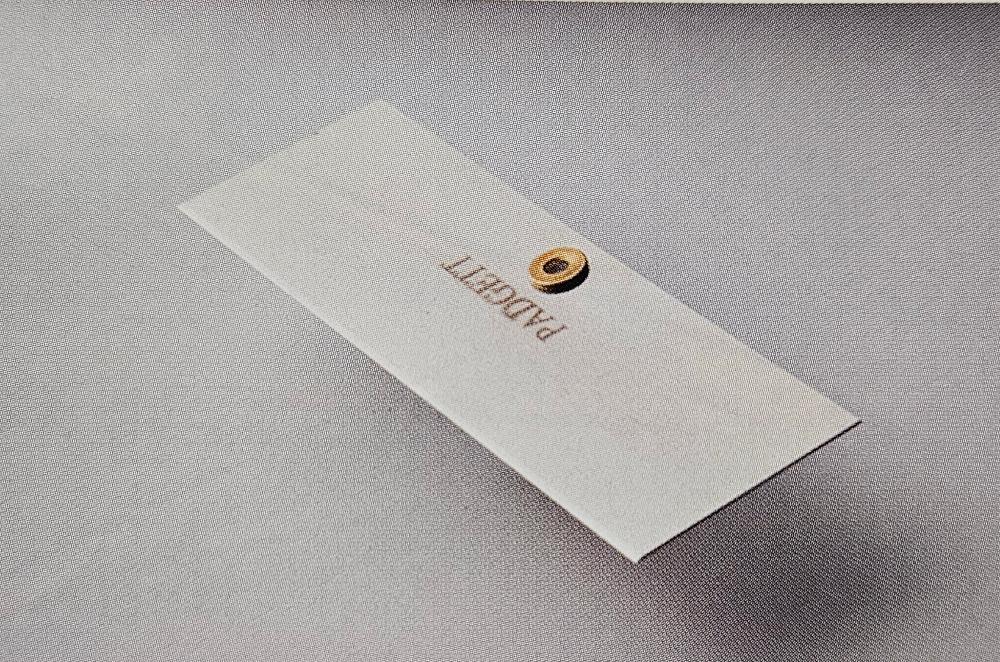
NAME: Dermatome Blade
ALIAS: Paget Blade
CATEGORY: Cutting/Dissecting
USE: Used for harvesting a split-thickness skin graft.
...
NAME: Dermamesher
ALIAS: Skin Mesher
CATEGORY: Cutting/Dissecting
USE: Used for expansion of a split-thickness skin graft.
...
NAME: Dermacarriers II Skin Graft Carrier
CATEGORY: Accessory
USE: Skin is place on top of this accessory and put through the Dermamesher to create the mesh pattern.
...
NAME: Watson Skin Graft Knife
ALIAS: Humby Knife
CATEGORY: Cutting/Dissecting
USE: Used for harvesting a split-thickness skin graft or for wound debridement.
...
NAME: Probe & Grooved Director
CATEGORY: Probing/Dilating
USE: Used to detect an obstruction in a tubular structure or determine the patch and the extent of a fistula tract.